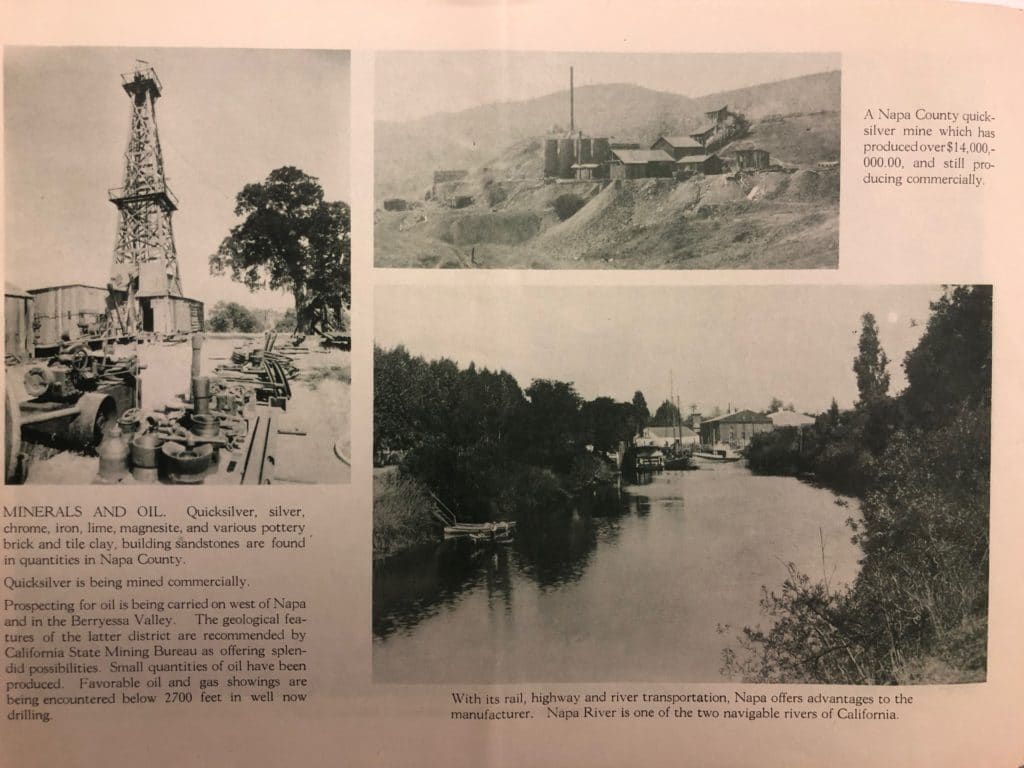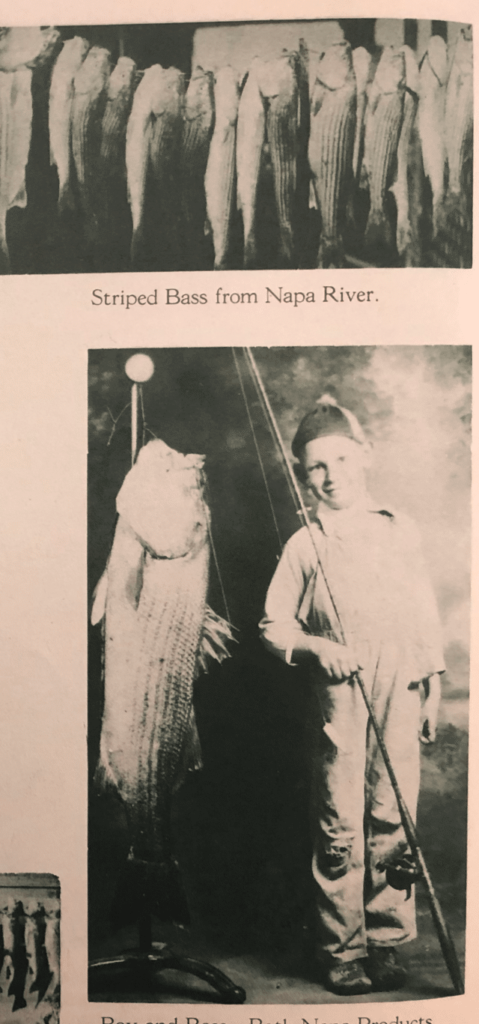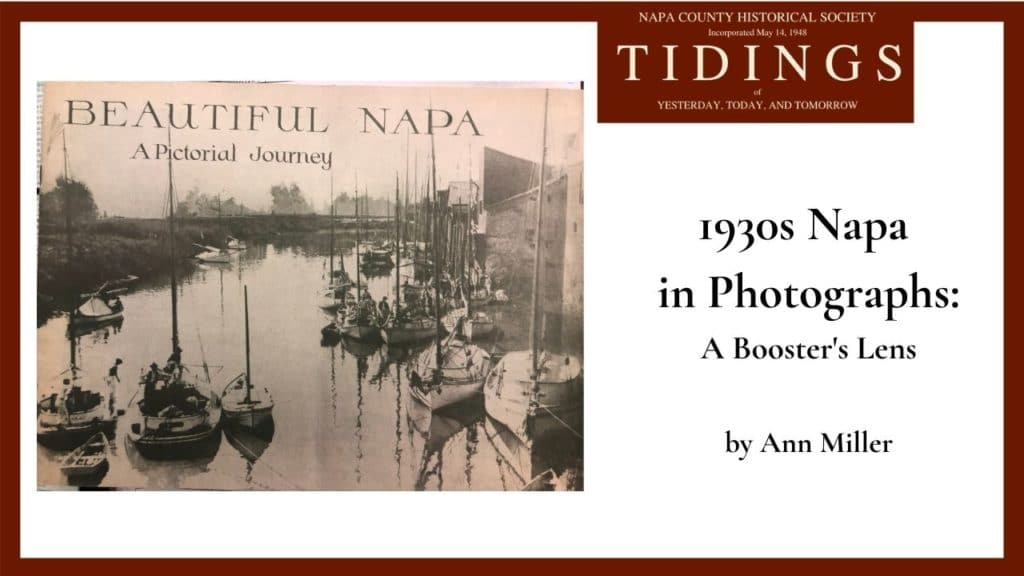Agriculture, General History, Napa County
1930s Napa in Photographs: A Booster’s Lens
Submitted by Ann Miller
Some ninety years ago, the men of the Napa Chamber of Commerce published a twenty-four page booklet of promotional photos, Beautiful Napa: A Pictorial Journey. Despite the handicaps of monochrome and fading paper, it tells a powerful story that still rings true.
The cover, depicting sailboats tied along the river, perhaps at the finish of a country regatta, is a tantalizing clue to the “brand” of the Napa Valley at the time. The opening pages tout our mild temperatures, sunny days, and natural beauty. And then, as if to summarize all that is loved then and now, in capital letters: “THE IDEAL PLACE FOR HOME.”
The undated brochure devotes full spreads to fruit blossoms in springtime, pigs and chickens, beef and dairy cattle, game and fishing, as well as a page listing twenty-one mineral spas for the treatment of “kidney, stomach and bladder troubles.”
What is missing? Wine.
The grapes are duly noted (15,000 acres) along with a photo of an untrellised, dry-farmed vineyard. Yet wine, the juggernaut of Napa’s commerce today, is missing entirely, another clue to its Prohibition-era publication.

Wine may be missing, agriculture is not. According to the brochure, water is in plentiful supply and “thousands of fertile acres await development.” The men of the Chamber would no doubt be astonished if they knew that just a generation later, these fertile acres would need protection, and result in the 1968 Agricultural Preserve.
Perhaps as a nod to economic diversification, the brochure includes a page devoted to “Minerals and Oil.” Apparently quicksilver (mercury) mining was still a selling point. A caption tells us that a mine “produced over $14,000,000 and is still producing commercially.’’ The authors also report that a small quantity of oil had been produced in Berryessa Valley, and that the “geological features of the district are recommended by the California State Mining Bureaus as offering splendid possibilities.” What would this “Pictorial Journey” look like today if mercury mining and oil had boomed?

Some of the most arresting photographs are those promoting the fish and game bounty of the region. A boy grins proudly, next to a bass as tall as he is, dozens of steelhead hang on a string and in another shot, deer carcasses hang too. Fishermen cast in a swollen creek and hunters pose, surrounded by ducks they’ve bagged. On the back cover a map points to the Berryessa Valley as a good place to hunt mountain lions and Chiles Valley as the place to bag deer, quail and doves. These are just a few of the pages touting Napa as a playground for anglers and hunters. Was this a shared enthusiasm for Napa Valley residents or did a sportsman’s enthusiasm bleed into the pages of the Chamber’s pictorial promotion? We will never know, but it is a tantalizing question when we consider who tells our story.


References
Napa Chamber of Commerce. Beautiful Napa: A Pictorial Journey. Napa, California: Napa Chamber of Commerce, [c1930]. (NCHS Object ID 1983.5.16)


